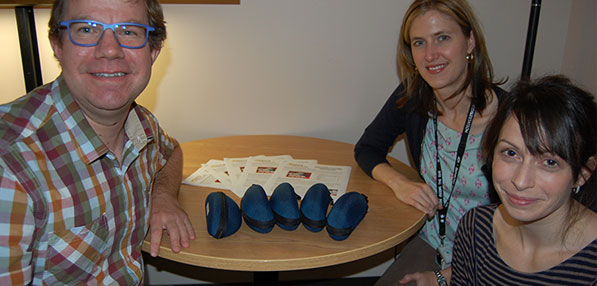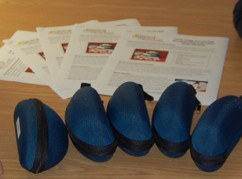Take Home Naloxone to address overdose as a preventable medical emergency
Launch of the Take Home Naloxone program at Richmond’s Anne Vogel clinic in November has given hope to Drs. Devin Tucker, Rochelle Stimpson and Katie Bertram that fewer people in Richmond will die or become permanently injured from an opioid overdose, a medical emergency that’s ultimately preventable.
“Take Home Naloxone is an evidence-based harm reduction strategy to reduce the potential dangers of accidental overdose from opioid drugs and medications,” said Dr. Devin Tucker. “We look forward to offering it to our clients in Richmond.”
While Take Home Naloxone will likely serve as the antidote to overdose from opioids such as heroin, it may also prevent overdose in people unaware that they are susceptible because they don’t use street drugs.
“Overdose can also occur for people taking medications for pain,” added Tucker. “That’s why it’s important that health care professionals know this treatment is now available in Richmond to people — or the families of people — who may be at risk of overdose.”
How Naloxone works
Opioids – such as heroin, morphine, methadone – suppress breathing at higher doses and, in the case of overdose, can result in severe brain damage and death.
Naloxone works to block opioid receptors and restores normal breathing within 2 to 5 minutes. Naloxone does not cause a high, and cannot be abused as it has no effect on the body in the absence of opioids.
Naloxone in VCH
Take Home Naloxone was launched provincially in 2012. There are now 24 participating VCH sites, with Richmond being the latest to offer the program. To date across VCH, Take Home Naloxone has been used by friends and families to reverse at least 52 opioid overdoses.
“We can save lives by providing this simple, but powerful tool to those at risk of overdose,” said Sara Young, coordinator, harm reduction programs, VCH. “Proof that the program works is evidenced by the number of lives it’s saved.”
More information
- Want to learn more about Take Home Naloxone? Visit towardtheheart.com
- The College of Physicians and Surgeons on BC also encourages doctors to familiarize themselves with Take Home Naloxone. Visit cpsbc.ca/for-physicians/college-connector/2014-V02-02/06.


